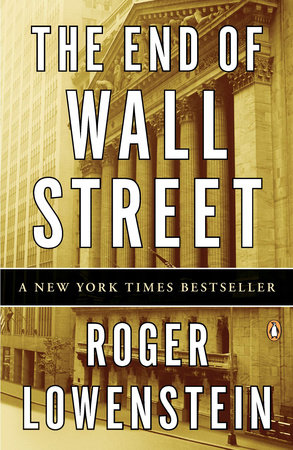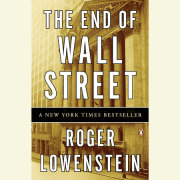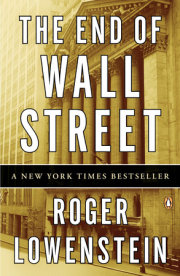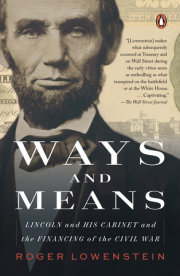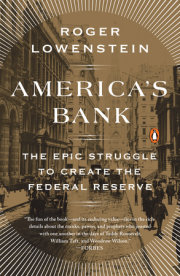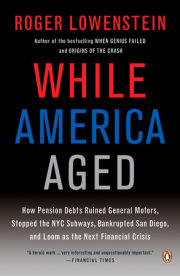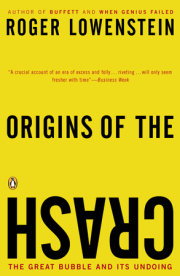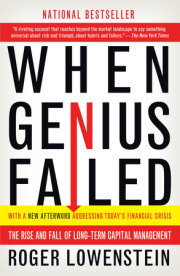In the late summer of 2008, as Lehman Brothers teetered at theedge, a bell tolled for Wall Street. The elite of American bankers wereenlisted to try to save Lehman, but they were fighting for somethinglarger than a venerable, 158-year-old institution. Steven Black, the veteranJPMorgan executive, had an impulse to start saving the daily newspapers,figuring that historic events were afoot. On Sunday, September14, as the hours ticked away, Lehman’s employees gathered at the firm,unwilling to say goodbye and fearful of what lay in wait. With bankruptcya fait accompli, they slunk off to bars for a final toast, as peopleonce did in advance of a great and terrible battle. One ventured that“the forces of evil” were about to be loosed on American society.Lehman’s failure was the largest in American history and yet anotherfinancial firm, the insurer American International Group, was but hoursaway from an even bigger collapse. Fannie Mae and Freddie Mac, thetwo bulwarks of the mortgage industry, had just been seized by the federalgovernment. Dozens of banks big and small were bordering on insolvency.And the epidemic of institutional failures did not begin todescribe the crisis’s true depth. The market system itself had comeundone. Banks couldn’t borrow; investors wouldn’t lend; companiescould not refinance. Millions of Americans were threatened with losingtheir homes. The economy, when it fully caught Wall Street’s chill,would retrench as it had not done since the Great Depression. Millionslost their jobs and the stock market crashed (its worst fall since the1930s). Home foreclosures broke every record; two of America’s threeautomobile manufacturers filed for bankruptcy, and banks themselvesfailed by the score. Confidence in America’s market system, thought tohave attained the pinnacle of laissez-faire perfection, was shattered.
The crisis prompted government interventions that only recentlywould have been considered unthinkable. Less than a generation afterthe fall of the Berlin Wall, when prevailing orthodoxy held that the freemarket could govern itself, and when financial regulation seemed destinedfor near irrelevancy, the United States was compelled to socializelending and mortgage risk, and even the ownership of banks, on a scalethat would have made Lenin smile. The massive fiscal remedies evidencedboth the failure of an ideology and the eclipse of Wall Street’sgolden age. For years, American financiers had gaudily assumed morepower, more faith in their ability to calculate—and inoculate themselvesagainst—risk.
As a consequence of this faith, banks and investors had plied theaverage American with mortgage debt on such speculative and unthinkingterms that not just America’s economy but the world’s economyultimately capsized. The risk grew from early in the decade, whenlittle-known lenders such as Angelo Mozilo began to make waves writingsubprime mortgages. Before long, Mozilo was to proclaim that evenAmericans who could not put money down should be “lent” the moneyfor a home, and not long after that, Mozilo made it happen: homesfor free.
But in truth, the era began well before Mozilo and his ilk. Its seedstook root in the aftermath of the 1970s, when banking and marketswere liberalized. Prior to then, finance was a static business that playedmerely a supporting role in the U.S. economy. America was an industrialstate. Politicians, union leaders, and engineers were America’sstars; investment bankers were gray and dull.In the postindustrial era, what we may call the Age of Markets,diplomats no longer adjusted currency values; Wall Street traders did.Just so, global capital markets allocated credit, and hordes of profitminded,if short-term-focused, investors decided which corporationswould be bought and sold.
Finance became a growth industry, fixated on new and complexsecurities. Wall Street developed a heretofore unimagined prowess forsecuritizing assets: student loans, consumer debts, and, above all,mortgages. Prosperity in this era was less evenly spread. Smokestackworkers fell behind in the global competition, but financiers who masteredthe intricacies of Wall Street soared on wings of gold. Financenow was anything but dull; markets were dynamic and ever changing.Average Americans clamored to keep pace; increasingly they resortedto borrowing. By happy accident, Wall Street had opened the spigot ofcredit. People discovered an unsuspected source of liquidity—the abilityto borrow on their homes. With global investors financing mortgages,ordinary families were suddenly awash in debt. The habit ofsaving, forged in the tentative prosperity that followed the war, gaveway to rampant consumerism. By the late 2000s the typical Americanhousehold had become a net borrower, fueled by credit from lessdevelopedcountries such as China—a curious inversion of the conventionalrules.
Paradoxically, the more license that was given to markets, the morethat Wall Street called on bureaucrats for help. Market busts becamea familiar feature of the age. Notwithstanding, it was the doctrine ofthe experts—on Wall Street and in Washington—that modern financewas a nearly pitch-perfect instrument. A preference for market solutionsmorphed into something close to blind faith in them. By themid-2000s, when the spirit of the age attained its fullest, the very factthat markets had financed the leverage of banks, as well as the mortgagesof individuals, was taken as proof that nothing could be wrongwith that leverage, or nothing that government could or should try torestrict. Financiers had discovered the key to limiting risk, and centralbankers, adherents to the cult of the market, had mastered the mysteriousart of heading off depressions and even the normal ups and downsof the economic cycle. Or so it was believed.
Then, Lehman’s collapse opened a trapdoor on Wall Street fromwhich poured forth all the hidden demons and excesses, intellectualand otherwise, that had been accumulating during the boom. TheStreet suffered the most calamitous week in its history, including amoney market fund closure, a panic by hedge funds, and runs againstthe investment firms that still were standing. Thereafter, the Street andthen the U.S. economy were stunned by near-continuous panics andfailures, including runs on commercial banks, a freezing of credit, theleveling of the American workplace in the recession, and the sickeningdrop in the stock market.
The first instinct was to blame Lehman (or the regulators who hadfailed to save it) for triggering the crisis. As the recession deepened,the thesis that one firm had caused the panic seemed increasingly tenuous.The trouble was not that so much followed Lehman, but that somuch had preceded it. For more than a year, the excesses of the marketage had been slowly deflating, in particular the bubble in home loans.Leverage had moved into reverse, and the process of deleveraging setoff a fatal chain reaction.
By the time Lehman filed for bankruptcy, the U.S. housing market,the singular driver of the U.S. economy, had collapsed. Indeed, by thenthe slump was old news. Home prices had been falling for nine consecutivequarters, and the rate of mortgage delinquencies over the precedingthree years had trebled. In August, the month before Lehmanfailed, 303,000 homes were foreclosed on (up from 75,000 three yearsbefore).
The especial crisis in subprime mortgages had been percolating foreighteen months, and the leading purveyors of these mortgages, havingstarted to tumble early in 2007, were all, by the following September,either defunct, acquired, or on the critical list. Also, the subprime crisishad fully bled into Wall Street. Literally hundreds of billions of dollarsof mortgages had been carved into exotic secondary securities, whichhad been stored on the books of the leading Wall Street banks, not tomention in investment portfolios around the globe. By September 2008,these securities had collapsed in value—and with them, the banks’equity and stock prices. Goldman Sachs, one of the least-affectedbanks, had lost a third of its market value; Morgan Stanley had beencut in half. And the Wall Street crisis had bled into Main Street. WhenLehman toppled, total employment had already fallen by more than amillion jobs. Steel, aluminum, and autos were all contracting. TheNational Bureau of Economic Research would conclude that the recessionbegan in December 2007—nine months ahead of the fateful daysof September.
On the evidence, Lehman was more nearly the climax, or one of aseries of climaxes, in a long and painful cataclysm. By the time it failed,the critical moment was long past. Banks had suffered horrendous lossesthat drained them of their capital, and as the country was to discover,capitalism without capital is like a furnace without fuel. Promptly, theeconomy went cold. The recession mushroomed into the most devastatingin postwar times. The modern financial system, in which marketsrather than political authorities self-regulated risk-taking, for the firsttime truly failed. This was the result of a dark and powerful storm frontthat had long been gathering at Wall Street’s shores. By the end of summer2008, neither Wall Street nor the wider world could escape theimminent blow. To seek the sources of the crash, and even the causes,we must go back much further.
Copyright © 2010 by Roger Lowenstein. All rights reserved. No part of this excerpt may be reproduced or reprinted without permission in writing from the publisher.

